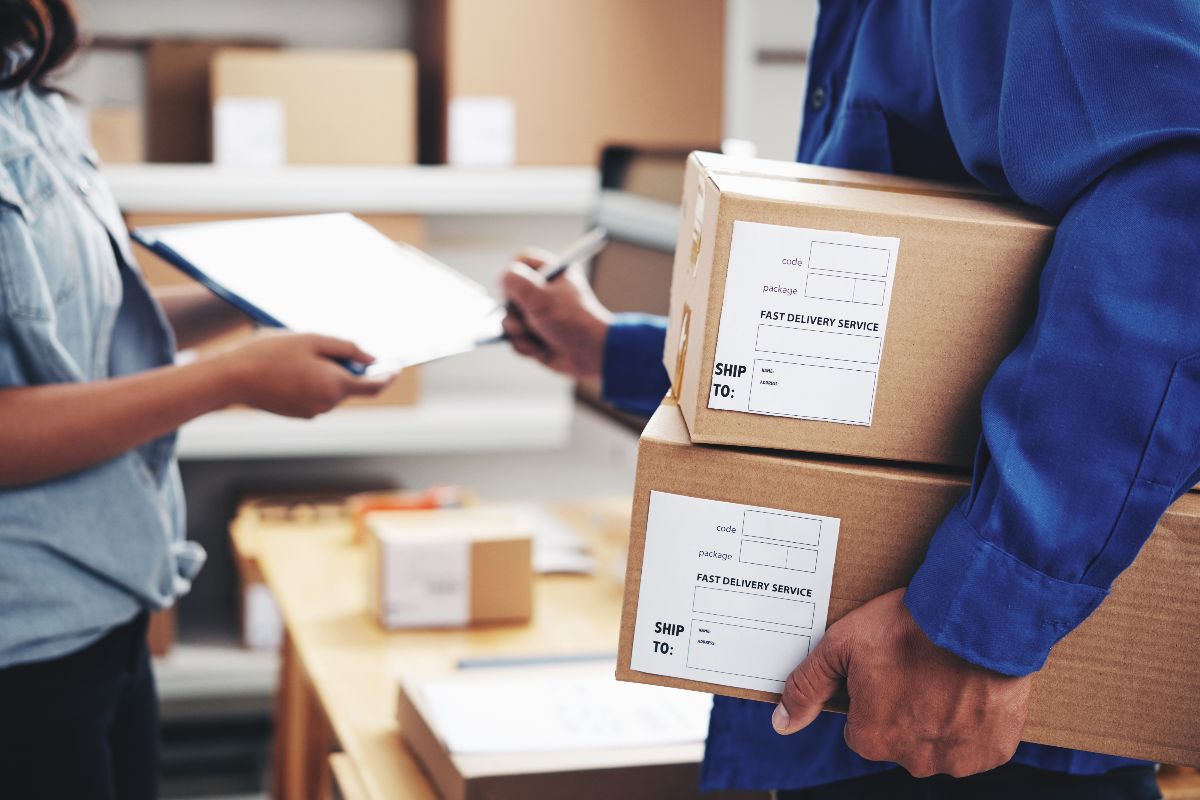Order fulfillment includes receiving, processing, and delivering consumer orders. When running an e-commerce business, choosing the fulfillment method that makes the most sense for your products, budget, and customers is important. Several types of order fulfillment methods are utilized by businesses, each with its advantages and considerations. Here, we will explore the main types of order fulfillment in more detail.

In-house Fulfillment
In this method, businesses handle the entire order fulfillment process within their facilities. This approach provides maximum control over the fulfillment process, allowing businesses to ensure quality, efficiency, and customer satisfaction. In-house fulfillment involves receiving orders, managing inventory, picking and packing items, labeling packages, and shipping them directly to customers. It requires the following:
- A dedicated warehouse space,
- inventory management systems, and
- a workforce capable of handling various fulfillment tasks.
While in-house fulfillment offers greater control, it can be resource-intensive and require significant infrastructure and personnel investment. Click here to learn more about order fulfillment management.
Dropshipping
Dropshipping is a popular fulfillment model, particularly for online businesses. With drop shipping, businesses do not maintain their inventory. Instead, when a customer places an order, the business transfers the order details and shipment information to a third-party supplier or manufacturer who directly ships the products to the customer. The business acts as a middleman, earning a profit from the price difference between the supplier and the customer. Dropshipping eliminates the need for warehousing, inventory management, and upfront investment in inventory. However, businesses have less control over product quality, shipping times, and customer experience.
Third-party Logistics (3PL)
Many businesses opt to outsource their fulfillment operations to third-party logistics providers (3PLs). A 3PL company specializes in logistics and supply chain management, handling warehousing, inventory management, picking, packing, and shipping processes. They often offer additional services, such as order tracking, returns management, and customer service. 3PLs have the expertise and established infrastructure, enabling businesses to focus on core competencies while leaving the logistics to the experts. This approach can be cost-effective, flexible, and scalable, as businesses can leverage the 3PL’s resources and network. However, it involves relinquishing some control over the fulfillment process and relying on a third party.
Fulfillment by Amazon (FBA)
Amazon provides the FBA service for sellers on their platform. With FBA, Amazon takes care of inventory after a placed order, handling the picking, packing, and shipping for sellers. Additionally, FBA provides customer service and manages returns on behalf of the sellers. FBA offers several advantages, including access to Amazon’s vast customer base, reliable and fast shipping, and customer trust in Amazon’s fulfillment capabilities. However, it comes with associated fees, and businesses are subject to Amazon’s policies and restrictions.
Crowdsourced Fulfillment
Crowdsourced fulfillment utilizes a network of independent individuals or local couriers to fulfill orders. Businesses can hire part-time or gig workers to pick up products from warehouses or stores and deliver them to customers. This approach is handy for last-mile delivery and can provide faster shipping times and greater geographic coverage. Crowdsourced fulfillment can be cost-effective, as businesses only pay for the specific orders fulfilled. However, it can be challenging to maintain consistent quality and reliability, as it relies on the availability and performance of the crowd.
Hybrid Fulfillment
Many businesses adopt a hybrid approach, combining different fulfillment methods based on their needs. They may handle in-house fulfillment for specific products or regions while utilizing dropshipping, 3PL services, or FBA for others. This approach allows businesses to optimize their fulfillment processes, balancing control, cost, efficiency, and customer experience based on different factors, such as product characteristics, customer demand, and geographic reach.
Conclusion
As seen above, businesses have a range of order fulfillment methods to choose from. The selection of an order fulfillment method depends on factors such as control, scalability, cost, geographic reach, and customer experience. Businesses can optimize their fulfillment processes, enhance customer satisfaction, and drive business growth by carefully assessing their specific needs and considering the advantages and considerations of available methods.









